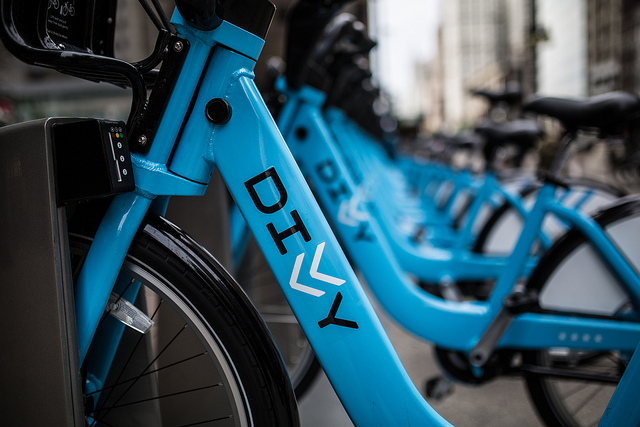Chicagoist's Top Stories Of 2013: The Year Of The Divvy
By Chuck Sudo in News on Dec 27, 2013 8:15PM
Divvy, Chicago’s official bike sharing program, proved once again the adage “if you build it, they would come” isn’t merely a cliché from a movie about baseball. The idea of a bike sharing program in Chicago was a dream for years that didn’t begin to snowball into fruition until Mayor Rahm Emanuel and his hand-picked Transportation Commissioner, Gabe Klein, prioritized it shortly after Emanuel’s 2011 inauguration.
While there were some questions raised about Klein’s ties to Alta Bicycle Share, LLC, the Oregon company that won the contract to manage Divvy (Klein recused himself from the bidding process), the program drew significant interest from Chicagoans when the city announced in April it would launch in the summer. Divvy, named to reflect the “divide and share” nature of bike sharing programs, was marketed by the mayor's press team to cater to public transit riders as a convenient way to complete their trips throughout the city, with stations holding 15-19 bikes near “L” stations and high-volume bus stops.
The Emanuel administration put its considerable PR machine to the task of promoting Divvy with stellar results. Divvy proved to be more popular than expected in its opening weekend in late June. By June 30, 4,123 bike trips were made on the network. Of those rides, 3,225 were made by annual members, and 898 were from customers who purchased 24-hour passes. The powder blue bikes soon became a ubiquitous presence on Chicago streets, sidewalks (unfortunately) and even on Lake Shore Drive. By September Divvy was the second-largest bike sharing program in America, a fact that was sure to not sit well with Tribune columnist and bicyclist troll John Kass.
Kass wasn’t the only one unhappy with Divvy. A group of condo owners on the North side filed a lawsuit against the city to have a station removed from outside their building, claiming its mere presence would lead to an influx of people, noise, parking and safety issues and property devaluation mere steps from their homes. A judge smacked down their lawsuit for the frivolous act of NIMBY nonsense that it was.
As Divvy usage grew so did the marketing opportunities. DivvyBrags allowed Divvy members to track their rides. The program partnered with dating service Project Fixup to set up prospective couples on Divvy-themed bike dates. They promoted winter biking through the addition of a candy cane-themed bike for the holidays. And the flood of novice cyclists saddling Divvys and pedaling their rentals down Lake Shore Drive or taking up serious sidewalk space prompted Divvy to launch a safety video contest to remind people of the rules of the road Divvy users will either not recognize or ignore.
With the program set to expand even further in 2014 to up to 400 stations and 4,000 bikes in the system, Divvy is one of the few feathers in the Emanuel administration’s cap the mayor can point to as helping to make Chicago a—wait for it—world class city and is at or near the top of Klein’s achievements during a busy 30 months as Transportation Commissioner. From our vantage point, any program that can help reduce traffic congestion and get people exercising in the process is a benefit, even with the kinks to work out.
